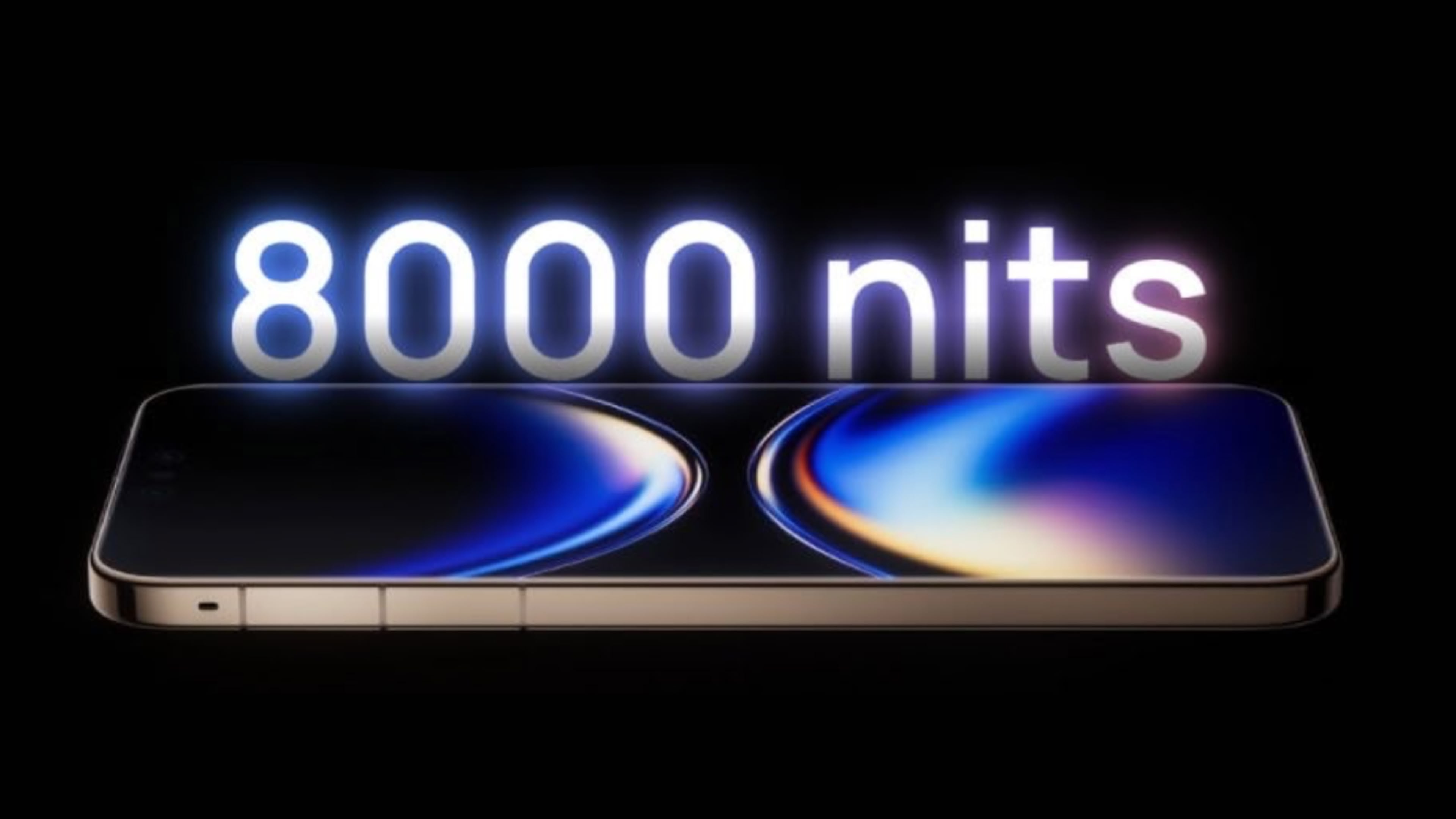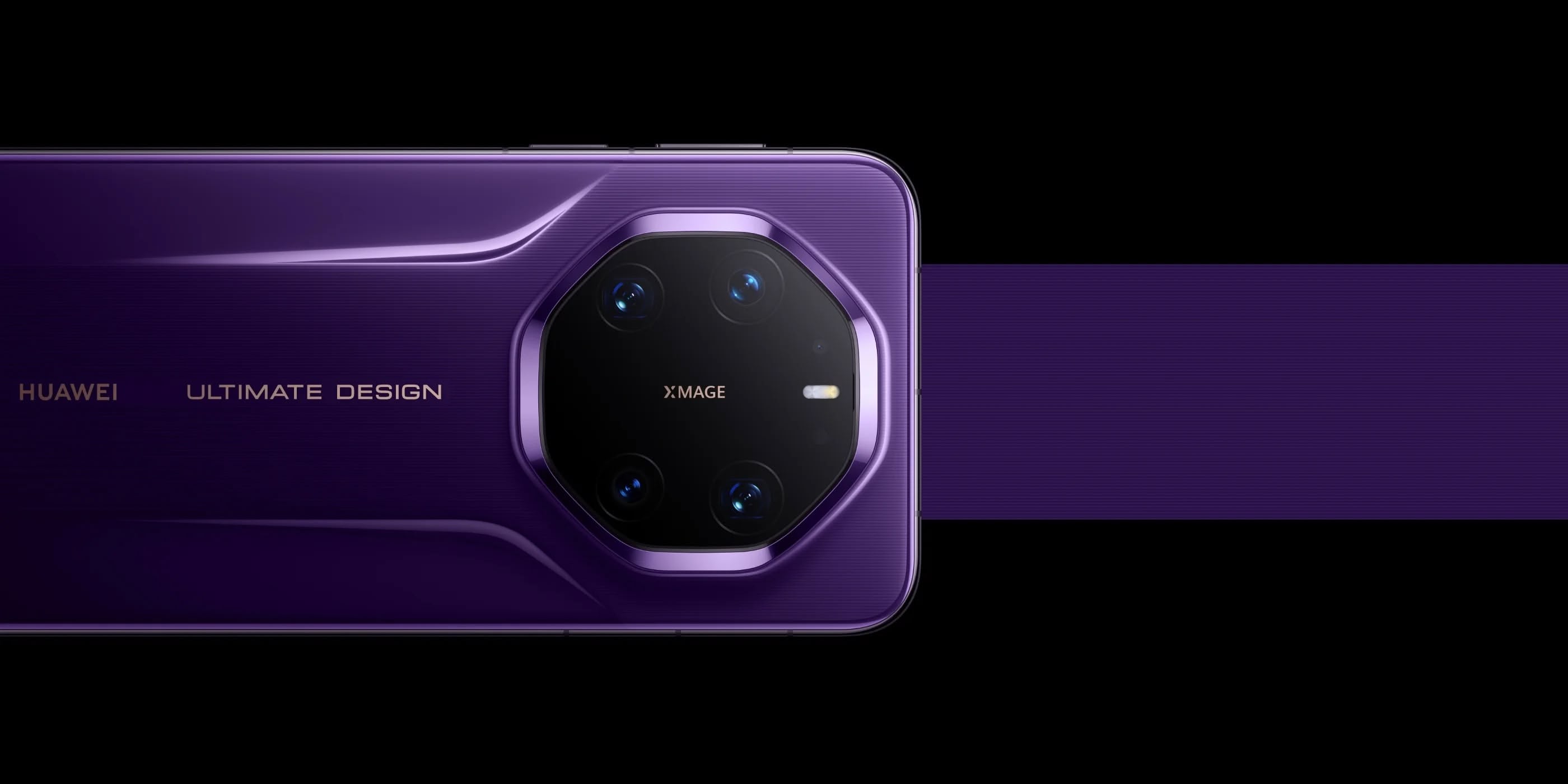11.25.2025
Huawei's just-announced Mate 80 lineup is attracting attention in China today thanks to a display spec that easily sees off the competition in the premium smartphone segment. The company claims

The company claims the OLED panels in its latest phones can reach up to 8,000 nits of peak brightness – a figure that, if independently verified, would make the Mate 80 series the brightest smartphones on the market.
Huawei says all four models – the Mate 80, Mate 80 Pro, Mate 80 Pro Max, and Mate 80 RS – achieve this peak output, while the Pro Max uses a dual-layer OLED design to push brightness more efficiently and with better thermal handling.
The claim positions Huawei well ahead of Apple's latest iPhone 17 models, which top out at 3,000 nits peak outdoor brightness and 1,600 nits HDR peak.
On paper, there's a yawning gap between the figures, but how they're measured is the key. Huawei hasn't said what testing conditions underlie its 8,000-nit claim, and peak brightness metrics often apply only to small portions of the display for very brief moments.
By contrast, Apple says its iPhone 17 models achieve a "typical" max brightness of 1,000 nits, while the other specifications describe sustained outdoor or HDR behaviour. That making direct comparisons difficult until reviewers can test the Mate 80 displays in controlled conditions.
There are also practical questions surrounding Huawei's figures. Real-world visibility isn't just about peak output – it depends on factors such as viewing angle, reflectivity, contrast, and colour accuracy.
If Huawei's numbers hold up under testing, the Mate 80 series could signal another leap in smartphone display performance. For now, the claims highlight how aggressively some manufacturers are pushing OLED panel brightness as a key differentiator.
Other notable specs in the Mate 80 series include high-end camera systems with variable-aperture main sensors and multiple telephoto lenses, RAM options reaching 20 GB on the top models, and large batteries up to 6,000 mAh paired with fast wired and wireless charging.

The Mate 80 Pro Max starts at CNY 7,999 (about $1,127) in China, while the top-tier Mate 80 RS Master Edition comes in at CNY 11,999 (about $1,683). The prices place the highest-end models firmly in flagship territory, even before considering storage upgrades.
This article, "Huawei Mate 80 Series Debuts With Claim of 8,000-Nit Peak Brightness" first appeared on MacRumors.com
Discuss this article in our forums
You may also be interested in this
Foxconn to invest additio…
12.13.2023
Major Apple assembler Foxconn plans to invest an additional 139.11 billion rupees (US$1.67 billion) in India’s Karnataka state, the state government said in a statement on Tuesday, furthering its efforts
Apple trims prices for iP…
09.15.2023
Apple has lowered the prices for its iPhone 14 lineup in China following the launch of the iPhone 15 lineup, according to its website in the country. Apple’s iPhone 14
How Apple trade in works …
05.05.2023
Macworld Buying a new iPhone, iPad or Mac can be an expensive business. But if you don’t mind trading in your previous device then you can make a decent saving
Driven by Apple’s iPhone,…
07.29.2025
Apple’s iPhone 16 Pro New research from Canalys (now part of Omdia) reveals that United States smartphone shipments grew by 1% in Q2 2025 as vendors continued to frontload device
Apple iPhone grew 6.1% in…
07.27.2023
According to the IDC Worldwide Quarterly Mobile Phone Tracker, Apple’s iPhone grew 6.1% in China even as the overall Chinese smartphone market declined 7.3% YoY in the second quarter of
Ahead of earnings, Apple …
07.30.2025
Apple faces challenges heading into Thursday’s earnings, including a late entry into the high-stakes AI race, U.S. import tariffs, and intense competition in China. The consensus on Wall Street anticipates
Apple Vision Pro to Launc…
02.06.2024
Apple's Vision Pro headset will be released in China as early as April and "no later than May," according to supply chain sources quoted by Asia's Wall Street News (via
Apple pulls Pray.com app …
02.22.2024
Pray.com app In a recent development that underscores the challenges of digital content accessibility in restrictive regulatory environments, the Pray.com app is being removed from the Apple App Store in


